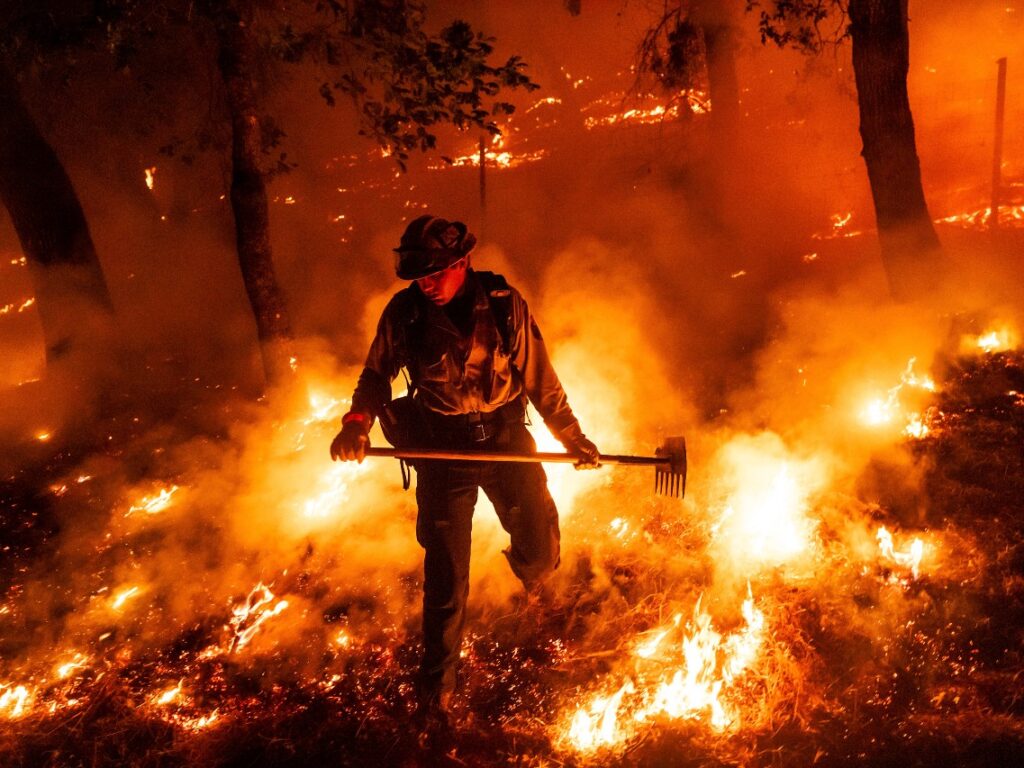By TAMMY WEBBER and JULIE WALKER, Associated Press
The Pickett Fire in Northern California has charred at least 10 square miles (26 square kilometers) of Napa County. It was 13% contained by Monday morning, according to the California Department of Forestry & Fire Protection, or Cal Fire.
“The fire is currently holding within its current footprint at 6,803 acres (2,753 hectares),” spokesperson Curtis Rhodes told The Associated Press on Monday morning. “With the weather over the last 48 hours, we’re seeing high temperatures, low humidity paired with some increasing wind in the late afternoon, which was giving our troops some additional work on the eastern side of this incident.”
Firefighting equipment has been put in place to protect vineyards, he added.
Wine production “is a driving force here in the community as far as income and revenue,” Rhodes said.
About 150 people were ordered to leave their homes, while another 360 were under evacuation warnings as the fire threatened 500 structures near Aetna Springs and Pope Valley, 80 miles (130 kilometers) north of San Francisco, said Cal Fire spokesperson Jason Clay. Some evacuation orders were later lifted.
More than 1,230 firefighters backed by 10 helicopters were battling the California fire, which began in a remote area Thursday after a week of hot weather. The cause of the fire is under investigation.
Heat wave complicates the firefighting efforts
Residents of the western United States have been sweltering in a heat wave that hospitalized some people, with temperatures hitting dangerous levels throughout the weekend in Washington, Oregon, Southern California, Nevada and Arizona.
Clay said the weather has moderated since the California fire began, with Sunday’s high about 94 degrees Fahrenheit (34 Celsius). But humidity levels were expected to drop with increasing winds later in the day.
“That’s been a driving factor in the afternoons since we’ve seen the fire activity pick up for the last three days,” Clay said, adding that “support from all up and down California has been critical to our efforts.”
The Pickett Fire began in the same area as the much larger Glass Fire in 2020, which crossed into Sonoma County and eventually burned about 105 square miles (272 square kilometers) and more than 1,500 structures.
Fires fueled by dry vegetation
The 2020 blaze was driven by wind, while the current conflagration is fueled mainly by dry vegetation on steep slopes — some of it dead and downed trees left over from the Glass Fire and some of it grass and brush that grew back and then dried out again, said Clay.
In central California, the state’s largest blaze this year, the Gifford Fire, was at 95% containment Sunday after charring nearly 206 square miles (534 square kilometers) of San Luis Obispo and Santa Barbara counties since erupting on Aug. 1. The cause is under investigation.
Although it’s difficult to directly tie a single fire or weather event directly to climate change, scientists say human-caused warming from burning fossil fuels like coal and gas is causing more intense heat waves and droughts, which in turn set the stage for more destructive wildfires.
Follow us for more stories like this
CapRadio provides a trusted source of news because of you. As a nonprofit organization, donations from people like you sustain the journalism that allows us to discover stories that are important to our audience. If you believe in what we do and support our mission, please donate today.
Donate Today


Dining and Cooking